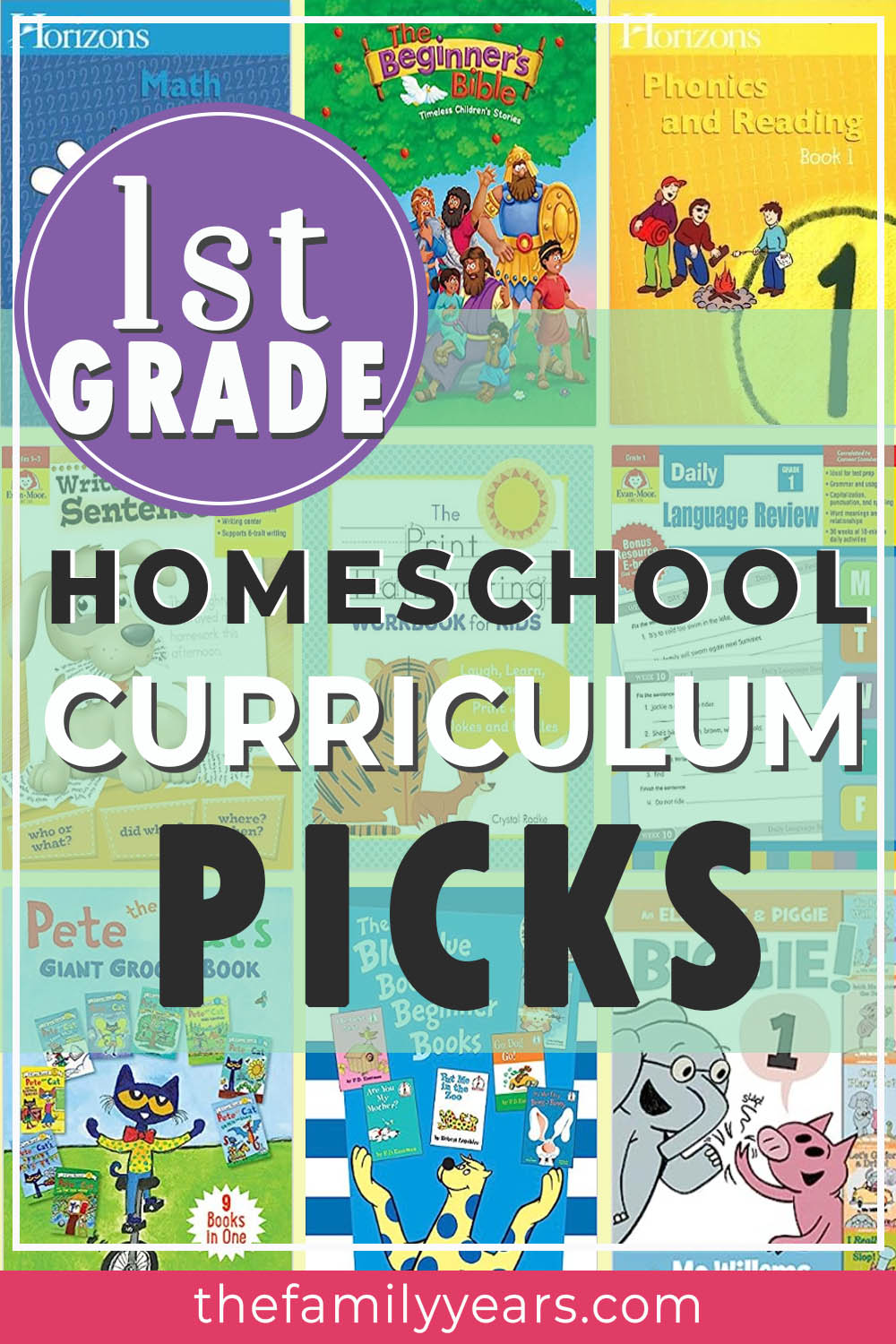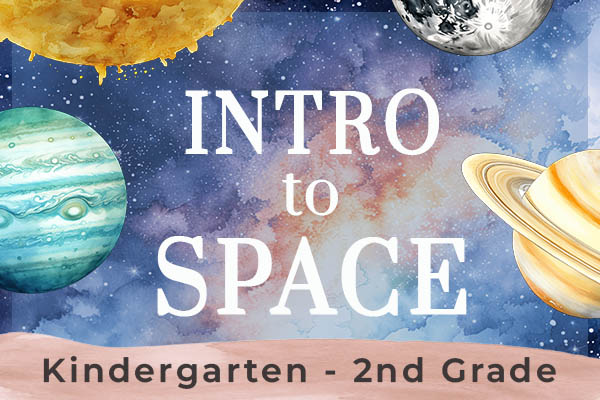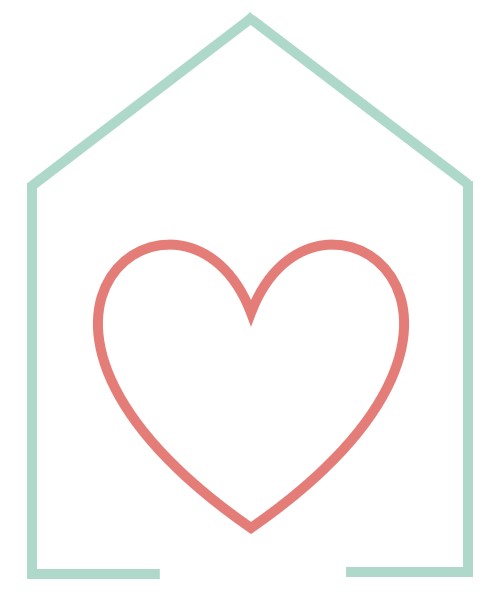Are you planning your 1st Grade Homeschool Curriculum and need some ideas? Today we’re sharing our favorite elementary homeschool resources to help get you started!
HOMESCHOOLING
The BEST 1st Grade Homeschool Curriculum
June 21, 2023
The following content may contain affiliate links. If you purchase something from the links, we may receive a commission.

First grade is full of learning and fun! Strengthening reading skills takes center stage, closely followed by learning the foundational math skills.
In our household, first grade was the year we homeschooled with another family. It was a wonderful experience, but also challenging as we really got to explore what homeschooling is like with multiple ages and stages.
Below you will find the BEST 1st Grade Homeschool Curriculum picks that we used in our classroom as well as alternatives for those who might be looking for something similar, but not the exact same program. Since every family’s homeschooling journey and needs are going to be different, feel free to use this list as a starting point and tailor it as needed.
What subjects should be taught in the 1st grade?
As with Kindergarten, the two main subjects to focus on in 1st grade are reading and math. Regardless of your child’s reading level or proficiency, first grade is a fantastic year to strengthen and grow reading skills. For our curriculum, that included a combination of a phonics-based program, plenty of reading practice, and daily read-aloud stories.
Here are the other subjects we tackled in 1st grade. Keep in mind, while it looks like a long list of subjects, we work in a block system, so we don’t cover everything at the same time. Many subjects, like social studies, science, and extracurricular subjects are done as unit studies rather than throughout the entire school year.
• Bible Study
• Language Arts
• Reading
• Spelling
• Creative Writing
• Handwriting (Print)
• Math
• Social Studies
• Science
• Physical Education (PE)
• Extracurriculars
How many hours do you homeschool in 1st grade?
Life in a homeschool classroom is very different than a traditional classroom. The pace is much more relaxed in a homeschool classroom and the transition time between subjects is substantially less. Because of that, a school day of 7 or 8 hours isn’t required. Our daily 1st grade homeschool curriculum usually took between 2 – 3 hours to complete each day.
1st Grade Homeschool Curriculum Picks
Let’s jump right in to our 1st grade homeschool curriculum picks.
BIBLE STUDY
For our 1st grade homeschool Bible study, we read through The Beginner’s Bible: Timeless Children’s Stories. There are 94 stories total that are divided up into the Old Testament and New Testament. This is a great introductory Bible storybook, but also a fantastic read-aloud for advanced first grade readers. If you have a child that is already a proficient reader, this book can work two-fold for both a daily Bible study and reading time. Each week, I also picked a short scripture to use as a memory verse.
After we completed The Beginner’s Bible, we moved onto How Great is Our God: 100 Indescribable Devotions about God and Science. This was our 2nd year using an Indescribable Kids devotional. These devotions, written by Louis Giglio, do a fantastic job combining scientific facts with biblical truths. While these books are a bit advanced for 1st grade, the messages are truly engaging for all ages, and we’ll likely reread them again in the years to come.
Other Bible storybooks that you might consider include:
– The Complete Illustrated Children’s Bible
– The Jesus Storybook Bible
– Jesus Calling Storybook Bible
– Indescribable: 100 Devotions for Kids about God and Science
1st Grade Language Arts Curriculum
The main focus of our 1st grade language arts curriculum was strengthening reading skills. The primary workbook we used was Horizons Phonics & Reading – Grade 1. Horizons has a very strong phonics and reading program. We used the same program for Kindergarten and it continues through 3rd grade. I did end up buying the teacher’s edition and did not feel like I needed it as the year progressed. The student workbook does not contain an answer key, but the answers should be straightforward for the most part.
For reading practice and to assist with fluidity, we also used these sight word flash cards. We would practice a few words per day until the card was mastered. By the end of the year, we completed all three sets! I really think that using sight words along with phonics practice is essential for developing readers.
As an introduction to basic grammar, we also used Evan-Moor Daily Language Review (Grade 1) as a warm-up each day. The second half of the year, we added Evan-Moor Language Fundamentals (Grade 1). While I highly recommend Horizons for phonics, it is lacking when it comes to grammar. Many families choose not to add grammar studies until 2nd or 3rd grade, but if you are using Horizons and want to supplement with something, these Evan-Moor workbooks are a great fit.
Other 1st Grade Phonics and Language Arts Homeschool Curriculums that we considered include:
– Abeka Phonics and Reading Grade 1 – Letters and Sounds
– Explode the Code 1
Reading and Literature
Daily read-aloud stories (where I read a chapter a day or more if we were really into the book) were probably my favorite part of the homeschool day. This was usually completed right before break time and was a good transition for the remaining subjects. Typically, we pop popcorn and sit outside on the swing (if it was nice outside), and really make this time something we all look forward to.
You can find a list of some of the 1st Grade Read Aloud Chapter Books that we covered here. These books are a lot of fun and would be most enjoyed by children between the ages of 6 and 9 years old.
It’s important to note that not all kids are capable (or willing) to sit through a long chapter, even if they are interested in the book. This can especially be true when you are schooling several age ranges. If you have a child that doesn’t want to simply sit and listen, that is ok. The best way to combat this is to give them something to do with their hands while you are reading. It could be a coloring sheet, play dough, lacing cards, building blocks, etc. Just because they are doing something in addition to the story does not mean that they are not listening.
Having the students read aloud was also an important aspect of our language arts curriculum. In Kindergarten, the primary books we read were from the BOB Books collection. If your child is brand new to reading or it has not “clicked” yet, I would start with BOB Books and go from there. Once we completed all of the BOB Books, we moved on to easy picture books and 1st grade early chapter books.
Below are book titles that were on our regular rotation for 1st grade readers. Did you know that it is ok for a child to read the same book multiple times? While reading a variety of books will help with advancing vocabularies, reading the same book over and over can help with word recognition and improved fluidity.
The Big Blue Book of Beginner Readers by P.D. Eastman includes 6 classic beginner books: The Best Nest, Are You My Mother?, Put Me in the Zoo, Go Dog Go!, A Fly Went By, and It’s Not Easy Being a Bunny.
The next three books are Dr. Seuss classics. The rhyming rhythm of the stories helps young readers figure out what comes next even when they are not quite sure of the word.
One Fish, Two Fish, Red Fish, Blue Fish by Dr. Seuss
Green Eggs and Ham by Dr. Seuss
The Cat in the Hat by Dr. Seuss – If it’s been a while since you’ve read this one, you should note that it is a lengthy picture book for a beginner reader. We finished it in 2-3 days, rather than one sitting.
Elephant & Piggie Collection by Mo Willems – We just adore Elephant & Piggie. The repetition of words is helpful for new readers and even parents will get a kick out of this charming and hilarious duo. Do yourself a favor and purchase one of the Elephant & Piggie Biggie! Books to get the most bang for your buck. The original Biggie book contains five stories including Today I Will Fly!, Watch Me Throw the Ball!, Can I Play Too?, Let’s Go For a Drive!, and I Really Like Slop!.
Biscuit by Alyssa Satin Capucilli is an adorable collection of stories following the sweet puppy, Biscuit. It is a part of the My First I Can Read books where sight words and word repetition help new readers gain confidence in their reading. If you like Biscuit, you will also enjoy the kitten version, Mittens by Lola M. Schaefer.
Pete the Cat by Kimberly and James Dean are the wildly popular stories that follow the grooviest cat around and his animal friends. Pete the Cat is offered in picture book format (which are great for reading aloud), but they are also available as a part of the My First I Can Read! Collection.
Unicorn and Yeti by Heather Burnell are a part of the Scholastic Acorn collection. These short stories contain easy-to-read text with fun and colorful illustrations on every page.
Dragon by Dav Pilkey is another series of stories that are a part of the Scholastic Acorn collection. If you’ve ever read the Dog Man or Captain Underpants series, these are from the same author, but geared towards a younger audience.
Step into Reading Disney/Pixar Story Collection features five early reader books containing some of Disney’s most beloved characters and stories including Toy Story, Finding Nemo, Cars, Ratatouille, and Monsters, Inc.
Step into Reading Five Enchanting Tales Disney Princesses features five early reader books stories from Disney’s The Princess and the Frog, Cinderella, The Little Mermaid, Tangled, and Disney/Pixar Brave!.
Hi! Fly Guy by Tedd Arnold – If your kids enjoy the Hi! Fly Guy series you are in luck. As of this writing, there are currently 18 books in this hilarious series.
Diary of a Pug by Kyla May is a part of the Scholastic Branches collection. These books are slightly more advanced and longer than the Scholastic Acorn collection, but still suitable for new readers between K-2nd grade. Children will enjoy the fast-paced plots and adorable illustrations as they go through life with Bubbles, a.k.a. “Bub” the pug.
Owl Diaries by Rebecca Elliott is a New York Times bestselling early chapter book series. It is a part of the Scholastic Branches collection and includes loads of relatable stories about family, school, and friendship.
Spelling
For spelling this year, I used the free spelling lists from k12reader.com. Each day, the words were copied three times and on Friday, we had a spelling test. This approach worked well for my traditional learner, but in hindsight, I wish we would’ve tried something different. In 2nd grade, we used the Evan-Moor Building Spelling Skills. I really like that it uses a phonics approach with lots of activities to learn each week’s word list.
Parents should note that the Evan-Moor spelling workbooks are what I would call a gentle approach to spelling. If spelling is not your child’s strong-suit and you want to give these workbooks a try, I would stick with the appropriate grade level. However, if you have a stronger speller, you will definitely want to select the next grade up.
Popular 1st Grade Spelling Homeschool Curriculums you might want to consider include:
– All About Spelling Level 1
– Spelling You See B: Jack and Jill
Creative Writing and Handwriting
In both Kindergarten and 1st grade, we do not do a formal writing program. Instead, I purchased a Primary Wide-Ruled Composition Notebook with Picture Space for creative writing. Sometimes a topic was provided and other times, I would have them come up with their own topic to write about.
In 1st grade, we aimed for 3 complete sentences and an illustration. This was not something graded, but rather as a fun introduction to writing. During the 2nd half of the year, I introduced the students to super sentences with Evan-Moor Write a Super Sentence as my guidebook. We tackled the basics of sentence writing including –
– What is a sentence?
– Capitalization rules
– Proper punctuation
– The naming part and telling part of a sentence
– Transition words
– Brainstorming
– Editing
Separate from creative writing was handwriting practice. We especially liked The Print Handwriting Workbook for Kids.
Other handwriting books that your children might actually enjoy are:
– 101 Jokes Handwriting Practice Book
– Silly Sentences Handwriting Workbook
Math
If you are new to homeschooling, picking a solid math program will help you in the long run. While some subjects are easy to change from year to year, math is a core subject, so it is important to find what works for your student as soon as possible. With that said, if your current math curriculum isn’t working, I would encourage you to try something new until you find a good fit.
When choosing a homeschool math curriculum, you will need to decide if you would like a traditional math program or one that follows common core standards. If you are not keen on teaching math, there are also many online options available.
The second point to consider is whether you would prefer a program that is mastery or spiral. In a mastery program, the student will learn a new concept and practice that concept until it is fully mastered. In a spiral program, the student will learn a new concept, practice that concept, and then review other concepts learned. It’s considered a spiral program because the concepts come up over and over again throughout the year, building on each lesson.
In 1st grade, students will learn counting to 100 in many ways including skip counting, even and odd numbers, using tally marks, and word numbers. Addition and subtraction are introduced as well as time to the quarter hour, counting money, and measurements. Learning new shapes, rounding numbers, and graphing is also typically introduced in first grade.
We started with Horizons Math in Kindergarten with the anticipation of eventually switching over to Saxon math. When originally researching which math program to use, that seemed to be the consensus in a lot of homeschooling boards. However, we have found that Horizons Math has been a wonderful fit for our family and I can say that we have no intention of switching any time soon.
The Horizons math program goes from Kindergarten through 8th grade and is a spiral program. It is important that you begin the program at the correct level. The Horizons website has a placement test that can help you gauge the right level for your student.
For reference, we used Horizons Math Grade 1 in Kindergarten. Therefore, in 1st grade, we completed Horizons Math Grade 2. If you have a child that excels in math, I recommend this approach. However, the Horizons math program is grade appropriate and the 1st grade math program is most certainly sufficient for that age level.
Other popular 1st Grade Homeschool Math Curriculums we considered include:
– Saxon Math 1
– Singapore Math Grade 1
– Abeka Arithmetic 1
Buying a quality set of manipulatives is helpful for establishing the principles of mathematics in 1st grade. It is also something that will be used in 2nd grade as well. Manipulatives that we used regularly include:
History / Social Studies
Before I jump into what we used for history and social studies, I just want to state that (in my opinion) these subjects are not necessary in 1st grade. Yes, it is never too early to introduce students to history, but it is second to reading and math. If you are already feeling overwhelmed with those two subjects, there is absolutely no reason to add anything else.
With that said, we did complete Sonlight’s Exploring American History program during our 1st grade homeschooling year.
If you have homeschooled for awhile or have spent any amount of time Googling “what is the BEST homeschooling curriculum,” you’ve likely come across Sonlight. Sonlight is a literature-based homeschool curriculum program that covers History, Language Arts, Bible Studies, and Science. The Sonlight Exploring American History program was originally listed as a Kindergarten program that could also be used in 1st grade. It has since changed and is now listed as grade range 1st through 3rd.
After completing the program, I think this was a good move on behalf of Sonlight. The books were too advanced for Kindergarten and honestly, might even be too much for a first grader. For the History portion, you will need the instructor’s guide, Heroes and Happenings Volumes 1 and 2, and a few various books that you can purchase online or borrow from your local library. The full program includes daily lessons for Bible, History & Geography, and Read-Alouds (Language Arts). Additionally, you may choose to purchase on-grade readers.
Sonlight is a fantastic homeschooling curriculum program. Their teacher’s guides are organized and well thought-out with an easy daily layout. If you are looking for an all-in-one history/language arts curriculum, I would definitely give them a shot. Although expensive, it is possible to find a lot of the books and even the teacher’s guides secondhand.
For another social studies / geography option, you might enjoy our FREE Around the World unit study. Ideal for children ages 6 – 9, the Around the World unit study covers all 7 continents and 16 different countries and cultures. The countries included are the United States, Canada, Mexico, Peru, Colombia, Brazil, France, Italy, Norway, Morocco, Kenya, South Africa, China, Japan, India, and Australia.
Just to make sure we were covering everything we needed to, we also included the consumable Pearson MyWorld workbook (Grade 1). If you are looking for a social studies program that is similar to what is going to be covered in public school, this is a terrific resource.
Science
For our 1st grade homeschool science curriculum, we turned again to Sonlight. We completed the Science A course covering light and sound waves, biological features, space systems, and engineering design. Similar to Sonlight’s history program, the teacher’s guide was easy to follow and use. Along with the required books, we also purchased the Discover & Do Science Supplies Kit.
Will we continue using the Sonlight science and history curriculum for 2rd grade?
No, we won’t. One thing that I learned from Sonlight was how much I enjoyed creating our curriculums. It is time consuming, but very rewarding. Although I don’t plan to do it for language arts or math, I do plan on creating our science, social studies, and history curriculums in upcoming years.
For another science option, you might enjoy our FREE Intro to Space unit study. Ideal for children in Kindergarten through 2nd grade, this STEAM-based unit study introduces early elementary students to space basics such as the sun, moon, planets, stars, and more.
P.E. - Physical Education
Some states require physical education as part of the homeschooling curriculum. Our state is one of them. PE can come in many different forms. We combined physical activity with learning about health and nutrition for our program. If your child is active in sports, the days with practice or games could easily be considered physical education for that day. Taking a walk around the park, bicycling in the neighborhood, jumping rope in the backyard are also easy to do activities that could count as PE.
On rainy days, we turn to YouTube. Here are a few of the more popular online workouts for kids:
• PopSugar Fitness Family Fun Cardio Workout (13:08)
• Kids Workout 1 Beginners by Moe Jones Fitness (16:01)
• Kids Workouts by The Body Coach TV Joe Wicks
• Cosmic Kids Yoga
• Little Sports
Extracurricular Subjects
Extracurriculars can really add a lot of excitement to your homeschooling day. While I always try to throw in a dash of manners, character building, or healthy living into the mix, I also like to work in some things that I know my child will enjoy.
This year for extracurricular subjects, we mostly worked through a few craft kits and science projects (from the Sonlight DIscover & Do kit above).
The Kid Made Modern Arts and Crafts Supply Library is one of my favorite all-in-one kits for creative projects.
1st Grade Homeschool Schedule Example
Below is what our 1st grade homeschool schedule looks like during a normal day. While I have included times in the schedule below, our day is very flexible. The goal was to cover the bulk of the tablework on Monday through Thursday so we could use Friday as a flex day, usually for extracurricular stuff or field trips. At a minimum, we try to go on one field trip a month.
Monday – Thursday
9:00am – Spelling
9:10am – Bible / Memory Verse
9:15am – Phonics / Sight Words Flash Cards
9:35am – Reading
9:50am – Math / Addition or Subtraction Flash Cards
10:10am – Read Aloud Stories
10:30am – BREAK
10:50am – Creative Writing
11:00am – History (M/W) / Science (T/TH)
11:30am – Extracurricular
12:00pm – LUNCH
We hope you found this 1st Grade Homeschool Curriculum helpful. If you enjoyed this post, you may also like the following:
● Homeschooling 101
● FREE Around the World Unit Study
● FREE Across the USA – 50 States Unit Study
● FREE Intro to Space Unit Study
● FREE Intro to Weather Unit Study
● 14 Fun Read Aloud Chapter Books for First Grade
● 16 Super Read Aloud Chapter Books for Second Grade
● The BEST 2nd Grade Homeschool Curriculum
● The BEST Kindergarten Homeschool Curriculum






































